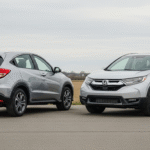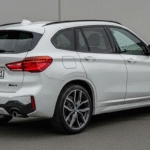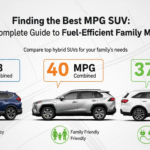
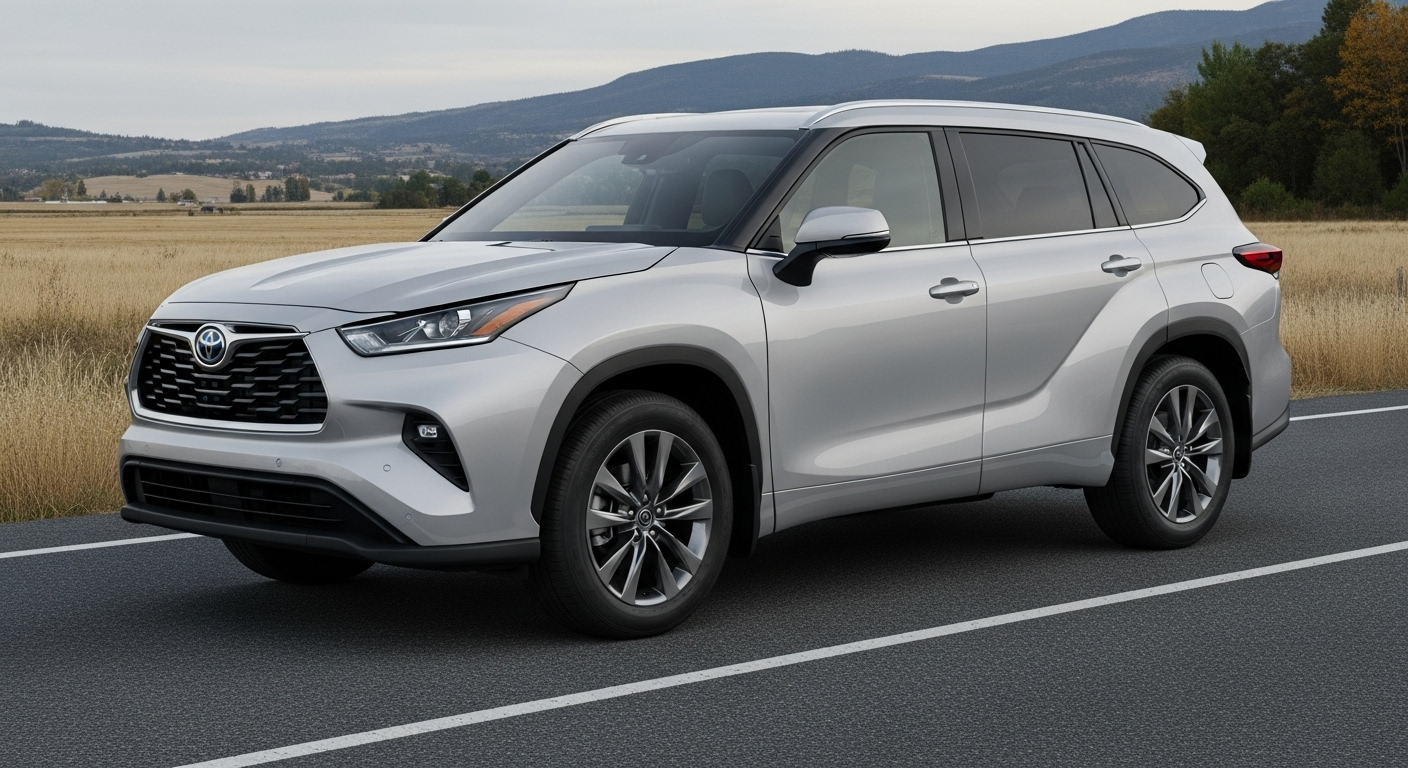
Is the Toyota Highlander Actually Worth the Hype? A Real Family’s Experience
The Toyota Highlander keeps appearing on every “best family SUV” list, but is it really all that?
After two years of school runs, family holidays, and the occasional IKEA trip from hell, I’ve got some thoughts.
And they might surprise you.
What Makes the Toyota Highlander Different from Every Other Family SUV?
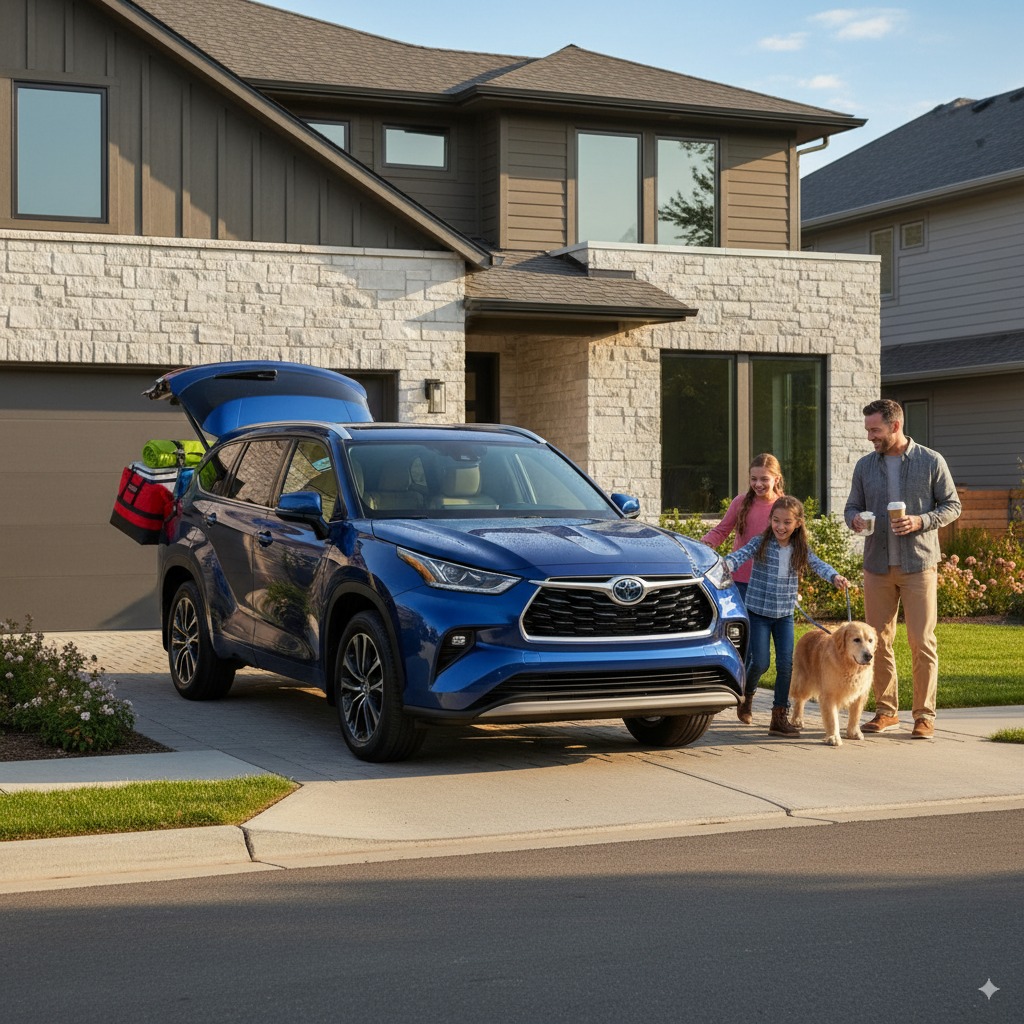
Here’s what nobody tells you about the Highlander when you’re car shopping.
It’s not the most exciting SUV on the road.
It’s not the cheapest.
It definitely isn’t the most luxurious.
But it does something most cars can’t – it disappears into your life in the best possible way.
Why This Matters:
- No drama starting every morning
- Service intervals that don’t bankrupt you
- Resale values that protect your investment
- Space that actually works for real families
I remember test-driving seven different SUVs back in 2022.
The BMW was lovely but felt precious.
The Land Rover was impressive until I saw the service costs.
The Highlander? It just worked.
Toyota Highlander Generations: Which One Should You Actually Buy?
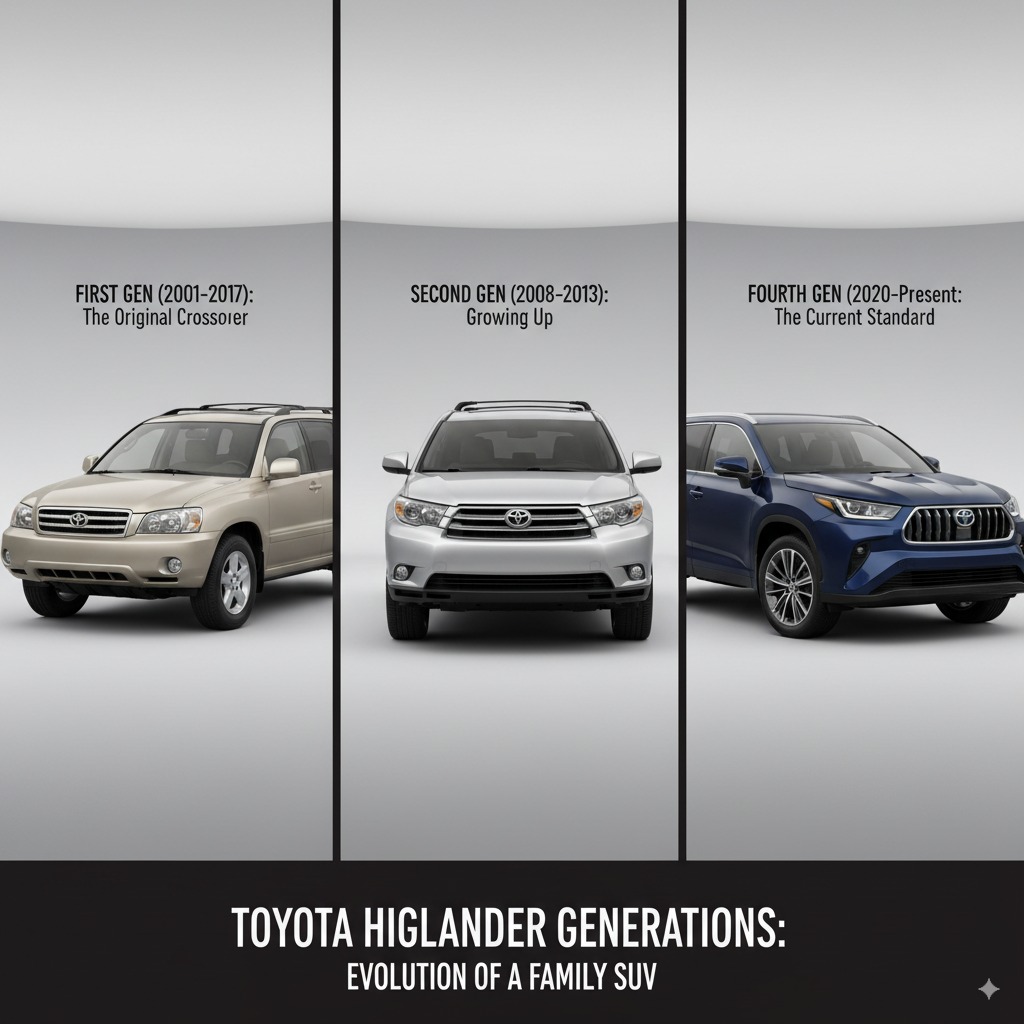
The used car market is mental right now, so knowing which generation to target matters.
Fourth Generation (2020-Present):
- Complete redesign with better everything
- Hybrid versions that actually make sense
- Tech that doesn’t feel five years old
- Higher prices because everyone wants them
Third Generation (2014-2019):
- Proven reliability record
- Sweet spot for value hunters
- Familiar Toyota interior layout
- Avoid the very early ones (usual first-year issues)
Second Generation (2008-2013):
- Budget-friendly option
- Simple, reliable mechanicals
- Interior feels dated now
- Still solid for high-mileage users
My recommendation?
2017-2019 models hit that perfect balance of proven reliability and modern features.
Plus, the depreciation curve works in your favour.
Living with a Toyota Highlander: The Unvarnished Truth
Forget the glossy magazine reviews.
Here’s what actually happens when you live with one for two years.
The Brilliant Bits
Space That Works:
- Seven proper seats (not those joke third rows in some SUVs)
- Boot space for a week’s shopping plus football kit
- Cup holders everywhere (seriously, Toyota went mad with them)
- Storage cubby holes that actually fit things
Reliability That Lets You Sleep:
- 24 months, 45,000 miles, zero breakdowns
- One recall for a software update (done in 30 minutes)
- Services cost what they quote (novel concept)
- Warning lights that mean something, not random panics
Fuel Economy That Doesn’t Hurt:
- Real-world 35mpg on longer runs
- Around 28-30mpg in town (with the hybrid)
- Non-hybrid still manages decent numbers
- Range anxiety? Not a thing with the Highlander
The Annoying Stuff
Interior Quality:
- Lots of hard plastic where you’d expect soft touch
- Road noise on motorways (it’s no Range Rover)
- Infotainment system feels a generation behind
- Climate control takes an engineering degree to master
Driving Experience:
- CVT gearbox takes getting used to
- Not exactly thrilling through corners
- Steering feel could be better
- It’s competent, not exciting
But here’s the thing – after six months, you stop noticing the negatives.
The positives just keep delivering.
Toyota Highlander vs the Competition: Reality Check
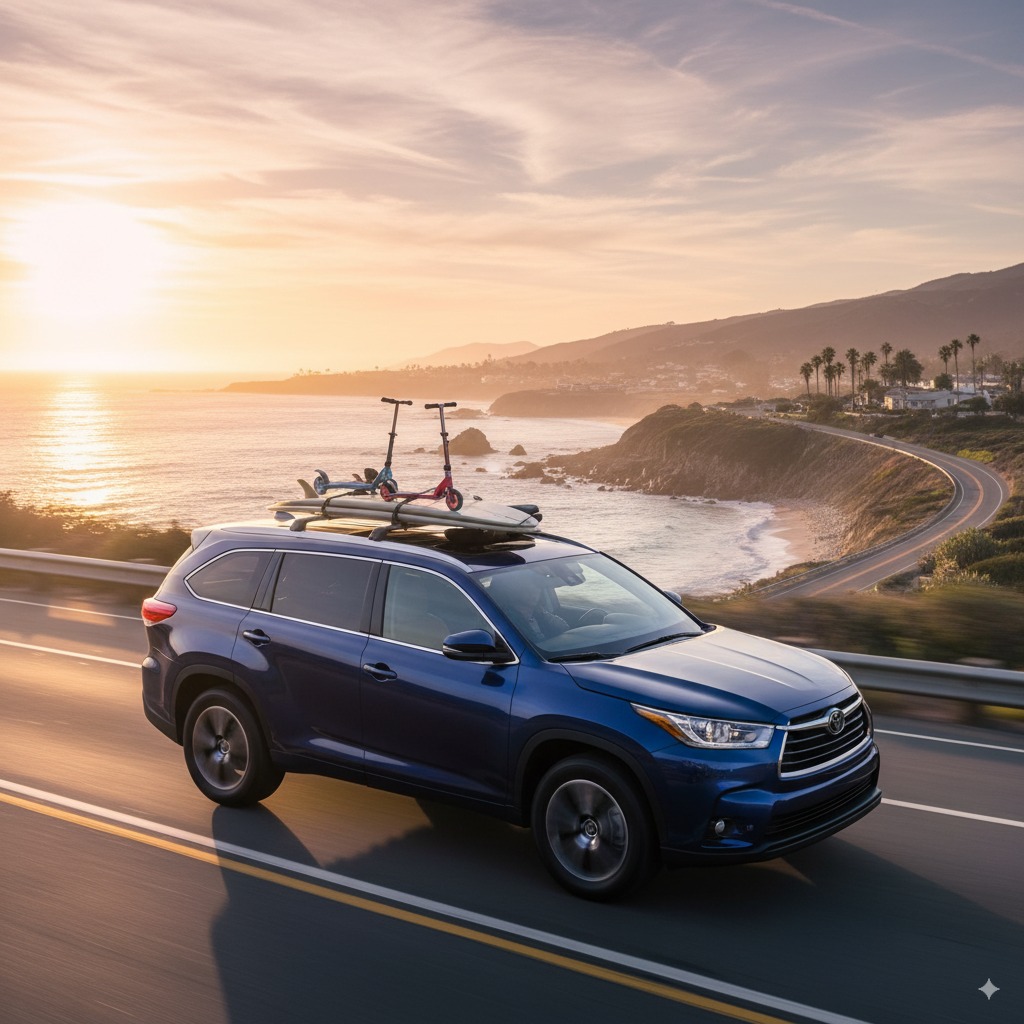
Everyone asks how it stacks up against the obvious rivals.
Honda Pilot:
- More powerful engine
- Worse fuel economy
- The interior feels cheaper
- Reliability questions with the 9-speed gearbox
Mazda CX-9:
- Better to drive
- Prettier inside
- Less reliable long-term
- Smaller third row
Nissan Pathfinder:
- Lower purchase price
- CVT reliability concerns
- Interior space advantage
- Unknown resale values
Ford Explorer:
- American space efficiency
- Turbocharged complexity
- Higher running costs
- Questionable long-term reliability
The Highlander doesn’t win any single category.
But it finishes second or third in all of them.
And sometimes, that’s exactly what you need.
Toyota Highlander Hybrid: Is It Worth the Premium?
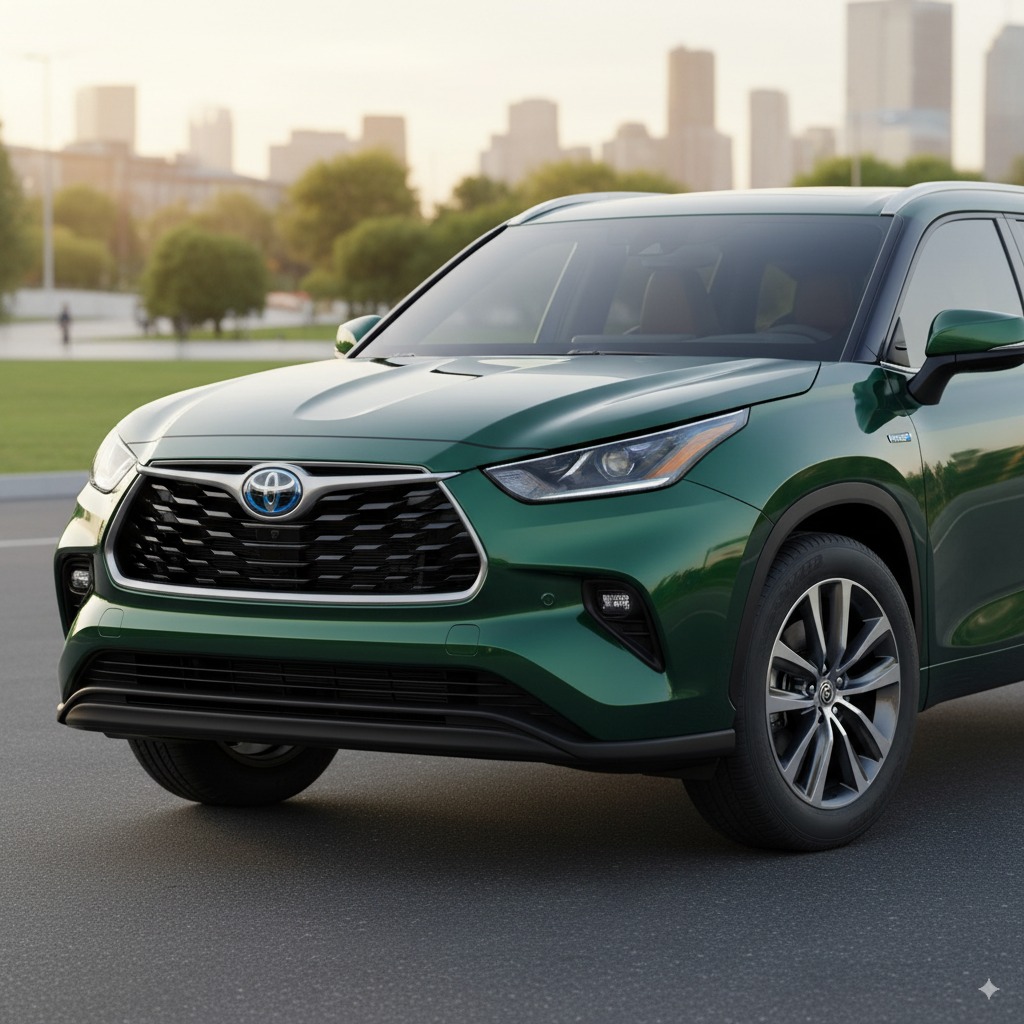
The hybrid question comes up in every conversation about the Highlander.
Short answer: probably yes.
The Numbers:
- £3,000-4,000 premium when new
- 8-10mpg better fuel economy
- Lower emissions for company car users
- Better resale values offset initial cost
Real-World Experience:
- No range anxiety unlike full EVs
- Seamless switching between power sources
- Slightly better refinement at low speeds
- More complexity but Toyota’s system is proven
My neighbour bought the hybrid version six months after I got mine.
His fuel bills are noticeably lower.
Mine has slightly more boot space (no hybrid battery).
Both of us are happy with our choices.
Buying a Used Toyota Highlander: Insider Tips
The used market for Highlanders is competitive because everyone knows they’re solid.
But there are still deals to be found.
What to Look For:
- Full Toyota service history (non-negotiable)
- Tyres wearing evenly (alignment issues are expensive)
- All seven seats present and correct
- Air conditioning that actually works
Red Flags:
- Modified suspension (why would you?)
- Accident damage poorly repaired
- Missing service stamps
- Excessive wear on driver’s seat (high mileage taxis)
Negotiation Strategy:
- Check tyre replacement costs (they’re not cheap)
- Factor in immediate service needs
- Use any missing history as leverage
- Don’t be afraid to walk away
I spent three months finding the right one.
Patience saved me £2,000 compared to the first one I nearly bought.
Toyota Highlander Running Costs: The Full Picture
This is where the Highlander really shines compared to premium rivals.
Annual Reality:
- Insurance: £400-700 (sensible family SUV rates)
- Servicing: £300-500 per year
- Tyres: £600-800 for a full set
- Depreciation: £2,000-3,500 annually
Hidden Costs:
- Premium fuel recommended (but not required)
- Air conditioning services every few years
- Brake pads last longer due to hybrid regeneration
- Timing chain issues are rare but expensive
Cost-Saving Tips:
- Independent Toyota specialists after warranty
- Buy tyres online for significant savings
- Regular maintenance prevents expensive surprises
- Keep service history immaculate for resale
Configuring Your Perfect Toyota Highlander
Toyota’s options list isn’t as crazy as some manufacturers.
But some choices matter more than others.
Essential Options:
- Leather seats (easier to clean with kids)
- Sat nav system (phone integration isn’t perfect)
- Rear entertainment system (peace on long journeys)
- Tow bar if you need one (aftermarket costs more)
Skip These:
- Premium paint colours (not worth the premium)
- Roof rails unless you actually use them
- Extended warranties beyond Toyota’s own
Trim Level Sweet Spot:
- Excel grade hits the value balance perfectly
- Gets you leather, climate zones, and decent stereo
- Avoid base Icon unless budget is tight
Real Toyota Highlander Owner Stories
These matter more than any professional review.
Sarah from Birmingham (2019 Hybrid, 3 years): “Best family car we’ve owned. Two teenagers plus their friends, holidays to Cornwall, zero drama. Wish the infotainment was better but everything else just works.”
Mark from Edinburgh (2016 3.5 V6, 4 years): “Bought it for towing the caravan. Does 25mpg even with 1,500kg behind it. Interior’s showing wear now but mechanically perfect.”
Emma from Cardiff (2020 Hybrid, 2 years): “Replaced a Range Rover Sport. Miss the luxury but love the reliability. Service costs are half what the Land Rover was.”
These are real experiences from real families.
No marketing fluff, just honest feedback.
Toyota Highlander Problems to Watch Out For
Every car has issues, and the Highlander isn’t immune.
But they’re usually minor and predictable.
Known Issues:
- Water pump leaks on early third-generation models
- Infotainment system freezing (software update fixes it)
- Rear suspension bushes wearing prematurely
- Climate control blend door failures
Prevention Tips:
- Keep coolant topped up and checked
- Update software at Toyota dealerships
- Have suspension checked during services
- Don’t ignore unusual noises from dashboard
Most problems are covered under warranty or recall campaigns.
Toyota generally sorts things out without drama.
Should You Buy a Toyota Highlander in 2024?
Here’s my honest take after living with one.
Buy One If:
- You need reliable seven-seat transport
- Running costs matter more than prestige
- You do mixed driving (motorway and town)
- You plan to keep it for several years
Look Elsewhere If:
- You want driving excitement
- Premium interior quality is essential
- You rarely use the third row
- Budget is tight (they hold their value well)
The Highlander does one thing brilliantly – it gets families from A to B without fuss.
That might sound boring, but it’s exactly what most of us need.
Frequently Asked Questions
Is the Toyota Highlander reliable? Extremely reliable. Toyota’s reputation is well-earned, and the Highlander consistently ranks in reliability surveys. Expect minimal issues with proper maintenance.
What’s the real fuel economy of a Toyota Highlander? Non-hybrid: 25-28mpg mixed, up to 32mpg on motorways. Hybrid: 35-38mpg mixed, up to 42mpg in ideal conditions. City driving reduces both significantly.
How many people does a Toyota Highlander actually seat? Seven or eight depending on configuration. Third row suits children or smaller adults for shorter journeys. All seats have proper seatbelts and ISOFIX points.
Should I buy petrol or hybrid Toyota Highlander? Hybrid makes sense for high-mileage users and offers better refinement. Petrol is simpler, slightly cheaper to maintain, and fine for lower annual mileage.
What’s the Toyota Highlander like to drive? Comfortable and competent rather than exciting. Smooth ride, light steering, adequate performance. It’s designed for family duties, not canyon carving.
How much boot space does the Toyota Highlander have? With third row up: limited space for a few bags. Third row down: generous space for family holidays. Flat loading floor and wide opening help practicality.
After two years of ownership, the Toyota Highlander continues to do exactly what I bought it for – keeping my family moving reliably, comfortably, and without drama.
Add a comment Cancel reply
Categories
- Auto Detailing (3)
- Car News (1)
- Car Reviews (10)
- Uncategorized (2)
Recent Posts
About us

Popular Tags
Related posts


Is the 2025 BMW X1 M35i Actually Worth the Hype? Let Me Break It Down

Finding the Best MPG SUV: Your Complete Guide to Fuel-Efficient Family Motor



